Teaching swing drumset can be daunting and is a common problem for many band directors. Drumset music can be difficult, in part because it is a different language, but once a few basics are explained, translating the written part into performance can make your jazz band swing as never before.
Swing style is not something that most students grow up hearing, but jazz drumset is very different than rock drumset. The biggest difference is the use of the bass drum, ride cymbal, and hi hat. The example shows the emphasis of the quarter note beat in basic rock time. The eighth notes are evenly spaced.
.jpg)
In swing, the first change is the style of the eighth notes. Swing is based on a triplet feel, and the ride cymbal plays a pattern reflecting this, written one of two ways:
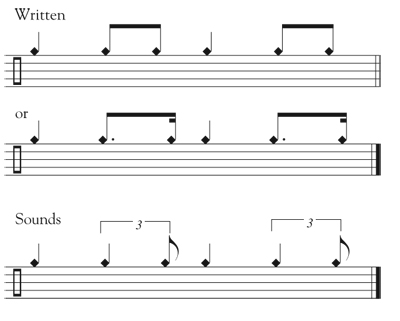
Adding the hi hat on beats two and four produces the basic swing time beat.
.jpg)
Students should learn to let that pattern run on auto-pilot, so they can add accents with the other drums. Have drummers practice placing accents on different beats in the measure with both the snare and bass drums.
Snare Drum coordination exercise:
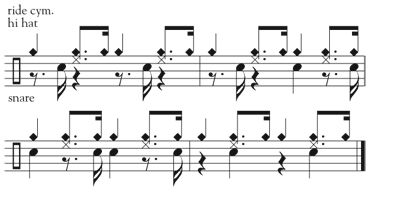
Bass drum coordination exercise:
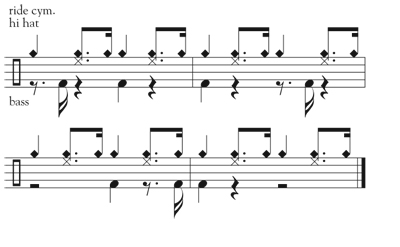
Remember that all of these rhythms are based on a triplet division of the beat, not the strict dotted eighth-sixteenth rhythm that is written. Drummers should avoid playing the bass drum on every beat. It is in the same frequency range as the string bass and creates a very muddy indistinct sound when both instruments play quarter notes.
Kicks
One of the most important skills a jazz drummer should have is the ability to kick the band. A good kick accents the rhythm the band plays, which also helps band members hear the rhythm. A kick is made up of two parts, the prep (preparation) and the accent. If the jazz band has a big, accented chord on beat two, the drummer should set things up before the accent by playing a prep rimshot. Then, on the accent, the drummer amplifies what the band plays with the crash cymbal and bass drum.
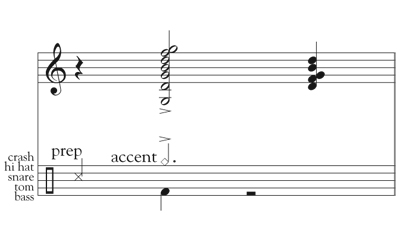
A kick can be made more interesting by adding more to the prep in the preceding measure.
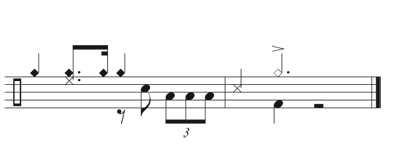
What makes the playing of kicks more difficult than it ought to be is that composers and arrangers rarely write out drumset parts except for young bands. In more advanced literature kicks will be written like this:

The slashes represent the basic swing pattern, and the small rest and note above the staff show the kick. The note is the bass drum and crash cymbal hit that amplifies the brass section; the rest is where the prep rimshot is placed. Notice that no lead-in is shown; drummers are almost always free to create one based on their abilities. Also, time pattern need not be continuous while the kick occurs. Keeping time through a kick muddies the sound of the band.

The way drummers learn when and what to do is to listen to swing recordings of such great bands as Count Basie, Duke Ellington, Woody Herman, Stan Kenton, and Maynard Ferguson. Find these recordings at a local library or online. Listening is the best way to absorb the style and to understand what is stylistically correct.






